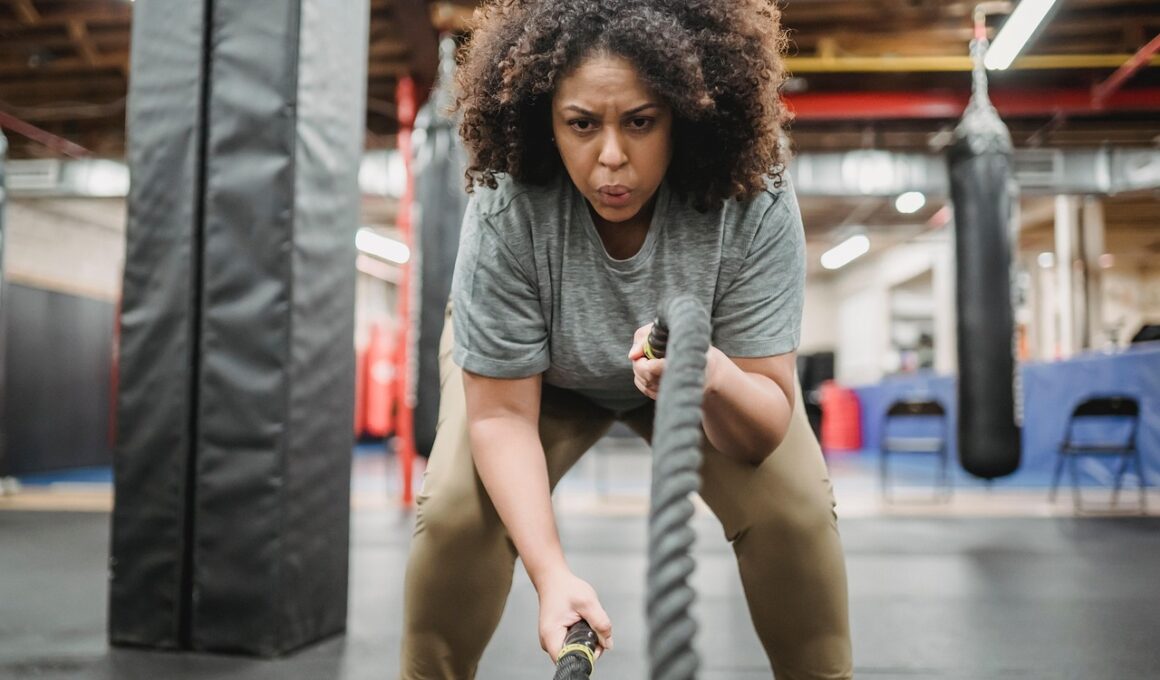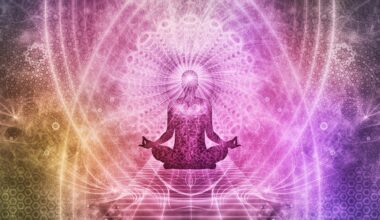Building Explosive Power Through Yoga
Yoga has emerged as a powerful tool for athletes seeking to enhance their explosive power and overall performance. The integration of yoga practices provides critical advantages by improving flexibility, strength, and mental focus. These attributes significantly benefit athletes in explosive sports, where quick movements and bursts of energy are essential. Engaging in specific asanas can lead to improved muscle coordination, balance, and agility. For athletes, yoga not only supplements traditional training but also offers a holistic approach to conditioning. It aids in muscle recovery and reduces the risk of injuries, which are vital considerations for intense training regimens. Furthermore, incorporating breathing techniques found in yoga allows athletes to optimize oxygen consumption, thus enhancing endurance. The combination of mind and body through yoga can also sharpen an athlete’s concentration during critical moments in performance. Through consistent practice, athletes notice better control over their movements, leading to more powerful and explosive actions in their respective sports. Thus, adopting a yoga regimen can be a game-changer for those looking to elevate their athletic capabilities and maximize their potential on and off the field.
To effectively build explosive power, it is important to focus on certain key yoga poses that target the muscle groups commonly involved in explosive movements. Poses such as the warrior series, chair pose, and boat pose can significantly strengthen the lower body and core, which are pivotal for powerful execution in sports like sprinting, jumping, or heavy lifting. These asanas not only enhance strength but also promote proprioception, which is the body’s ability to sense its position and movement. As athletes perform these poses, they actively engage their stabilizer muscles, which play a vital role in maintaining balance and coordination. Additionally, yogic breathing practices, known as pranayama, complement these physical exercises by increasing lung capacity and efficiency. This becomes especially useful during high-intensity bouts of physical activity where oxygen supply is crucial. Incorporating dynamic movements and flows found in Vinyasa yoga can further enhance agility and responsiveness, qualities essential for explosive sports. By integrating these targeted yoga practices into their training regimen, athletes can cultivate a greater athleticism that translates to improved performance in their chosen disciplines.
Moreover, the mental aspect of yoga cannot be overlooked in the quest for explosive power. The practice of mindfulness and meditation serves to prepare athletes psychologically, enabling them to focus on their performance goals. Techniques such as visualization can be incorporated, where athletes imagine their success, leading to increased confidence and reduced anxiety. This mental preparation is as crucial as physical training, as many athletes face psychological hurdles that can hinder peak performance. Yoga teaches practitioners to react calmly to stressful situations, making it an ideal mental training tool for young aspiring athletes. This mental conditioning can lead to enhanced decision-making skills in high-pressure moments during competition. The synergy between mental focus and physical capabilities creates a more balanced athlete, providing leverage against competitors. Additionally, fostering a positive mindset through yoga encourages resilience, allowing athletes to overcome challenges and setbacks more effectively. As athletes embrace the integrative benefits of yoga, they can unlock new levels of performance that emphasize both their physical prowess and mental acuity, ultimately leading to better outcomes during competitions.
The Role of Flexibility in Explosion
Flexibility has a profound effect on explosive power in sports, and yoga is a proven way to enhance this important attribute. Many explosive activities require a full range of motion, and tight muscles can limit this aspect significantly. Engaging in regular yoga practice allows athletes to maintain proper flexibility, which directly correlates with the ability to achieve maximum power output. Poses such as downward-facing dog and pigeon pose especially target tight areas that often hinder performance. Improved flexibility leads to enhanced muscle recovery post-workout and decreases soreness, enabling athletes to train harder on a regular basis. Yoga effectively stretches muscles and connective tissue, promoting blood circulation, which helps to deliver essential nutrients to muscles. A well-regulated body and less muscle tension result in smoother and more efficient movements, translating physical efficiency into explosive power during sports. Additionally, specific sequences can be utilized to activate hip-opening yoga poses, encouraging greater range of motion. As athletes witness their flexibility improve, they can execute their sports techniques with greater finesse and potency, generating more power through explosiveness in their athletic endeavors.
Another important aspect that yoga addresses is the body’s core stability—an essential factor in executing powerful movements. The core serves as the body’s foundation, engaging multiple muscle groups that work in concert during athletic performance. Practicing poses like planks and bridge pose helps strengthen core muscles, crucial for stability during explosive actions. A strong core allows athletes to transfer energy more effectively from their lower body into their upper body and vice versa, amplifying their power generation. Furthermore, yoga encourages the engagement of deep core muscles, which are often overlooked in traditional strength training. By stabilizing the core, athletes can create an efficient transfer of force, which is vital for explosive sports such as basketball and football. This core focus not only enhances their performance but also significantly reduces injury risks associated with instability. Athletes who want to achieve peak performance realize the critical nature of their core and its relationship with explosive power. Therefore, consistent integration of specific yoga practices revolving around core strengthening can lead to groundbreaking improvements in athletic capacity.
In addition to physical benefits, yoga provides athletes with essential recovery strategies that are crucial in maintaining peak performance. Intense training schedules often lead to fatigue and muscle strain, which impede the ability to produce explosive power consistently. Yoga incorporates stretches and restorative poses that promote recovery and restoration of energy. By utilizing techniques such as restorative yoga and deep stretches, athletes can facilitate muscle relaxation and combat soreness. Integrating sessions of yoga focused on relaxation helps regulate the nervous system, enabling athletes to bounce back more effectively after demanding training. Furthermore, improved sleep quality, often a byproduct of regular yoga practice, enhances recovery efficiency, thereby supporting the explosive output athletes strive for. Notably, yoga encourages mental awareness of the body’s condition, providing athletes with insight into their limits and needs. Overall, the restorative aspect of yoga builds a solid foundation that is essential for sustained athletic performance, ensuring that athletes can maintain explosive power while minimizing risk of overtraining and injury.
Conclusion: A Comprehensive Approach to Training
In conclusion, yoga offers a comprehensive approach for athletes seeking to build explosive power while ensuring an all-around balanced physical and mental state. The integration of flexibility, core strength, recovery, and mental focus establishes a multi-faceted training regime that yields superior results. Unlike traditional training that solely focuses on physical engagement, yoga emphasizes the connectivity between body and mind, optimizing athletic potential holistically. As athletes adopt this progressive approach, they can unlock a new level of performance, enhancing not only their explosive capabilities but also their overall athletic prowess. Incorporating yoga practices into training regimens will help foster resilience, adaptability, and controlled energy advancement. This multifaceted strategy empowers athletes to push their boundaries, achieve personal records, and excel in competitive arenas. Thus, for athletes in search of a competitive edge in their discipline, the incorporation of yoga into their training routines signals a transformative journey toward maximizing explosive power and athletic success, contributing significantly to long-term athletic development.
It is essential for athletes to remember that the journey towards explosive power through yoga is one of consistency and dedication. Regular practice and commitment are necessary to truly appreciate the benefits of yoga on performance. As with any training method, results may not be instantaneous, but gradual improvement will surely be witnessed with persistence. Setting realistic goals and tracking progress throughout the yoga journey can foster a sense of achievement. Engaging with seasoned teachers or yoga professionals who understand athletic needs can prove beneficial in curating a tailored practice that meets individual goals. Furthermore, explore different yoga styles to find which resonates best with personal training preferences. With an understanding of the unique benefits yoga can offer, athletes should not hesitate to incorporate this practice into their training schedules. Ultimately, yoga serves as a resource, guiding athletes to unleash their full potential while diversifying their training repertoire. The harmonious union of mind and movement established through yoga presents an opportunity for any athlete seeking to improve their explosive power and overall measures of success in the field. Commitment to this journey can lead to remarkable transformations both physically and mentally.


